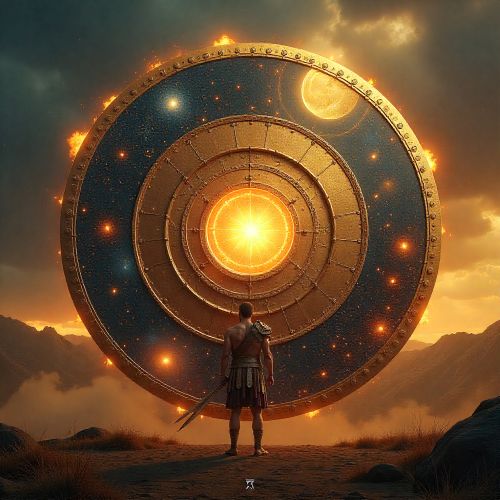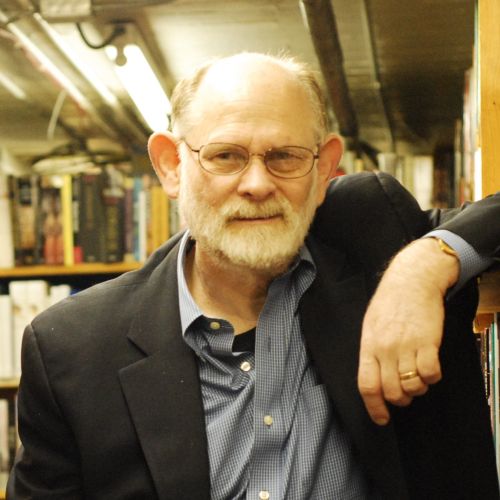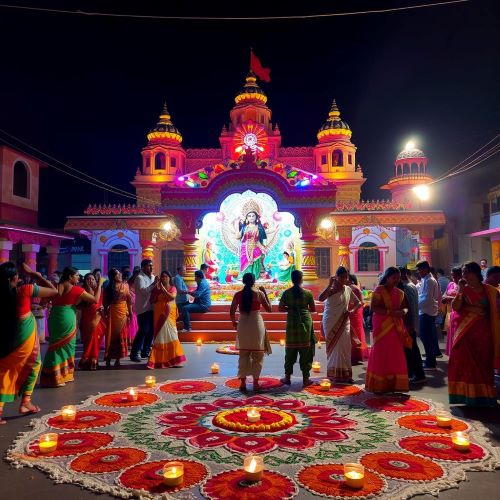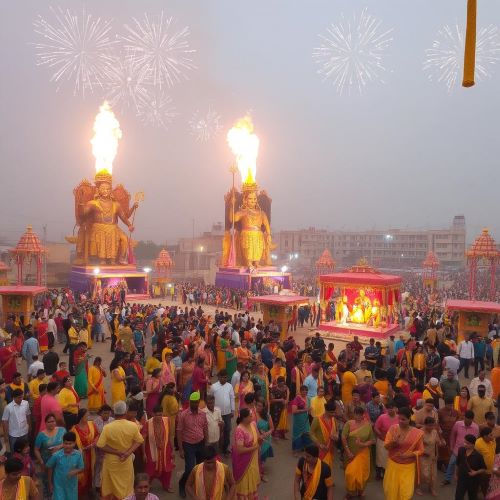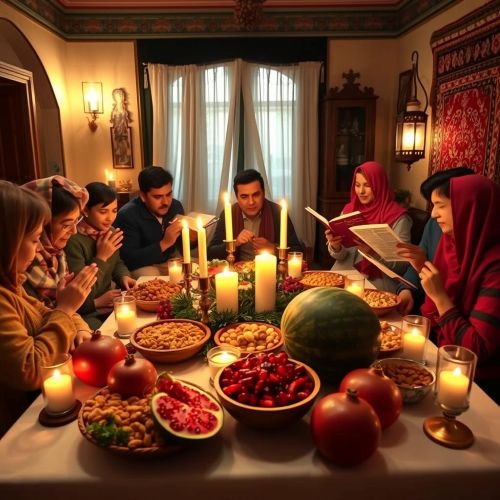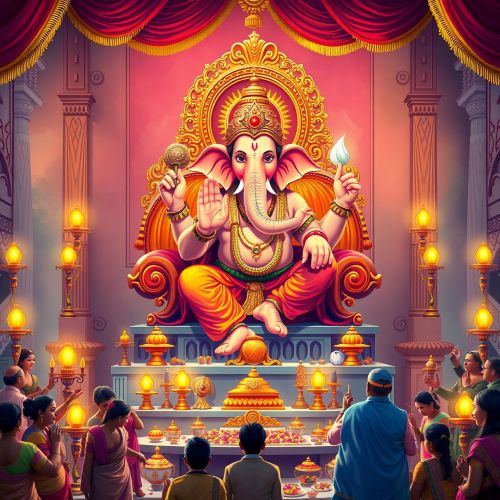Durga Puja : Celebration of the Divine Feminine
At a glance
| Description | |
|---|---|
| Location | West Bengal |
| Country | India |
| Dedicated To | Durga |
| Duration | 9-10 days |
| Time of Year | Septermber – October |
Introduction
Durga Puja is one of the grandest festivals celebrated in India, especially in West Bengal, Odisha, Assam, Tripura, and Bangladesh. Observed during the Hindu month of Ashwin, which falls between September and October, it marks the victory of Goddess Durga over the demon Mahishasura—a story symbolizing the triumph of good over evil. Beyond its religious essence, Durga Puja is a vibrant cultural and artistic event that brings together millions of people from diverse communities. It is a time when streets glow with lights, cities transform into art galleries of pandals and idols, and music, dance, and food fill the air. The festival beautifully merges devotion, creativity, and community participation, making it both a spiritual journey and a cultural celebration. In 2021, UNESCO recognized Kolkata’s Durga Puja as part of the “Intangible Cultural Heritage of Humanity,” acknowledging its artistic brilliance and universal appeal.
Connection with Mythology
Durga Puja finds its deepest roots in Hindu mythology, primarily narrated in the Devi Mahatmya of the Markandeya Purana. According to the legend, Mahishasura, a buffalo demon, acquired immense power after receiving a boon that no man or god could kill him. His tyranny spread across heaven and earth, leaving the gods powerless. To restore balance, the divine trinity—Brahma, Vishnu, and Shiva—combined their energies to create Goddess Durga, an embodiment of supreme feminine power or Shakti. With ten arms carrying celestial weapons and riding a lion, Durga fought Mahishasura for nine fierce days and finally slew him on the tenth, celebrated as Vijaya Dashami.
This myth represents not only the triumph of righteousness over evil but also the strength of the feminine divine. In Bengal’s cultural retelling, Durga is seen as a daughter returning home from Mount Kailash to visit her parents, bringing warmth, joy, and prosperity. Another legend connects Durga Puja with Akalbodhan, or the untimely invocation of the goddess by Lord Rama before his battle with Ravana in the Ramayana. His devotion moved Durga to bless him with victory, reinforcing the festival’s message that sincere faith and righteousness always triumph.
Main Activities
Durga Puja spans ten days, though the main festivities begin on the sixth day (Maha Shashthi) and end on the tenth (Vijaya Dashami). Preparations, however, start months in advance. Artisans from places like Kumartuli in Kolkata sculpt exquisite idols of Durga and her four children—Lakshmi, Saraswati, Kartikeya, and Ganesha—using river clay. These idols are installed in elaborately themed pandals that showcase artistic excellence and innovation, often inspired by social, historical, or global themes.
The festival’s rhythm begins with Mahalaya, the day when devotees invite the goddess to descend from the heavens. On Maha Shashthi, the idol is unveiled, marking Durga’s symbolic arrival on Earth. Maha Saptami includes the ritual of Nabapatrika Snan, where nine plants representing nine forms of Durga are bathed and worshipped. Maha Ashtami, considered the most sacred day, witnesses the Pushpanjali (floral offerings) and Sandhi Puja, performed at the precise moment when Ashtami ends and Navami begins—symbolizing Durga’s victory over Mahishasura.
During Maha Navami, devotees perform rituals and offer bhog (food) to the goddess. The evening comes alive with Dhunuchi Naach, a traditional dance performed with incense burners to the beats of the dhak (drum). The final day, Vijaya Dashami, marks Durga’s farewell. Married women participate in Sindoor Khela, smearing each other with vermilion as a gesture of marital harmony and goodwill. Later, the idols are carried in grand processions to rivers for Visarjan (immersion), symbolizing Durga’s return to her celestial abode. The emotional farewell is followed by Bijoya, where people exchange sweets and greetings, celebrating unity and renewal.
Importance in Cultural History
Durga Puja has evolved over centuries from a private household ritual to one of the world’s largest community festivals. Historical records trace its roots to the 16th century, when affluent zamindars (landlords) in Bengal organized private celebrations. Over time, these gatherings became public events, especially after the famous Baro-Yaari Puja (Twelve Friends’ Puja) in Guptipara in 1790, which laid the foundation for the Sarbojanin (community) Durga Puja. This transformation turned the festival into a platform for collective participation and artistic expression.
During British colonial rule, Durga Puja became a cultural emblem of unity and resistance. Intellectuals, artists, and freedom fighters used the festival to reinforce national identity and cultural pride. Post-independence, it continued to evolve as a symbol of Bengal’s creativity, inclusivity, and resilience. Today, Durga Puja is not only a religious celebration but also a socio-economic event that supports countless artisans, decorators, musicians, and small businesses. The festival stimulates local economies and tourism, with thousands employed in idol-making, lighting, food stalls, and event management.
Culturally, Durga Puja is a feast for the senses—a harmonious blend of devotion, art, music, cuisine, and fashion. It revives traditional crafts, literature, and performances while embracing modern interpretations. The pandals themselves have become spaces of public art, addressing contemporary issues such as environmental conservation, gender equality, and social justice. Each year, Kolkata transforms into a living museum of creativity, attracting millions who come to experience its grandeur.
Need a place to stay? Book your hotel room now!
International Appeal
Durga Puja’s influence now extends far beyond the Indian subcontinent. The global Bengali diaspora has carried this tradition to countries like the United States, the United Kingdom, Canada, Australia, and Singapore. In cities such as New York, London, and Toronto, community organizations recreate the festival’s essence by building pandals, organizing cultural performances, and preparing traditional Bengali delicacies. These gatherings serve as both cultural preservation and social bonding for diaspora communities, keeping their heritage alive for younger generations.
In 2021, when UNESCO inscribed Kolkata’s Durga Puja on the Representative List of the Intangible Cultural Heritage of Humanity, it recognized not only the festival’s artistic excellence but also its role in fostering community dialogue and inclusivity. This acknowledgment brought global attention to the craftsmanship of idol makers, musicians, and organizers who sustain the festival year after year. Kolkata’s Durga Puja alone attracts millions of visitors annually, including a growing number of international tourists, with a 20% rise in foreign arrivals recorded during the festival season in recent years.
Abroad, Durga Puja has adapted to modern contexts while retaining its core spirit. In the U.S., organizations like Sanskriti in Maryland and Kallol in New Jersey host large-scale celebrations attended by thousands. Similarly, in the U.K., cities like London and Birmingham witness grand pujas that feature dhunuchi naach, cultural competitions, and live performances. Even during the COVID-19 pandemic, overseas communities continued the tradition virtually, live-streaming rituals and performances to maintain the sense of devotion and togetherness.
Durga Puja today stands as more than a festival—it is a bridge between faith and creativity, tradition and modernity, local culture and global recognition. It celebrates the enduring power of the divine feminine and humanity’s shared values of courage, compassion, and victory over darkness. As the chants of “Jai Ma Durga!” echo across continents, the festival continues to remind the world that Durga Puja is not just worship—it is a living, breathing expression of culture, unity, and hope.
Source
The Holiday Story. (2025). Durga Puja Festival 2025: Complete Guide, Dates & Significance. Retrieved from https://www.theholidaystory.com/durga-puja-festival/
Encyclopaedia Britannica. (2025). Durga Puja Festival, Mythology, Story, Traditions, & Facts. Retrieved from https://www.britannica.com/topic/Durga-Puja
Wikipedia contributors. (2025). Durga Puja. Wikipedia. Retrieved from https://en.wikipedia.org/wiki/Durga_Puja
Web Anquets. (2024, July 16). Durga Puja: A Celebration That Transcends Borders. https://webanquets.in/blog-details/Durga-Puja:-A-Celebration-That-Transcends-Borders
Cottage9. (2025, May 27). A Comprehensive Guide to Maa Durga Puja Rituals and Significance. https://www.cottage9.com/blog/a-comprehensive-guide-to-maa-durga-puja-rituals-and-significance/
Times of India. (2025, October 8). Foreign tourist arrivals in Kol see 20% jump this Durga Puja. https://timesofindia.indiatimes.com/city/kolkata/foreign-tourist-arrivals-in-kol-see-20-jump-this-durga-puja/articleshow/124386558.cms
Frequently Asked Questions
Lorem ipsum dolor sit amet, consectetur adipiscing?
Lorem ipsum dolor sit amet, consectetur adipiscing elit. Praesent convallis vestibulum justo, ac tincidunt nunc vehicula quis. Nullam id dolor quis orci malesuada feugiat. Curabitur aliquet libero at urna ullamcorper, ac ultricies nulla dapibus.
Lorem ipsum dolor sit amet, consectetur adipiscing?
Lorem ipsum dolor sit amet, consectetur adipiscing elit. Praesent convallis vestibulum justo, ac tincidunt nunc vehicula quis. Nullam id dolor quis orci malesuada feugiat. Curabitur aliquet libero at urna ullamcorper, ac ultricies nulla dapibus.
Lorem ipsum dolor sit amet, consectetur adipiscing?
Lorem ipsum dolor sit amet, consectetur adipiscing elit. Praesent convallis vestibulum justo, ac tincidunt nunc vehicula quis. Nullam id dolor quis orci malesuada feugiat. Curabitur aliquet libero at urna ullamcorper, ac ultricies nulla dapibus.
Lorem ipsum dolor sit amet, consectetur adipiscing?
Lorem ipsum dolor sit amet, consectetur adipiscing elit. Praesent convallis vestibulum justo, ac tincidunt nunc vehicula quis. Nullam id dolor quis orci malesuada feugiat. Curabitur aliquet libero at urna ullamcorper, ac ultricies nulla dapibus.
Lorem ipsum dolor sit amet, consectetur adipiscing?
Lorem ipsum dolor sit amet, consectetur adipiscing elit. Praesent convallis vestibulum justo, ac tincidunt nunc vehicula quis. Nullam id dolor quis orci malesuada feugiat. Curabitur aliquet libero at urna ullamcorper, ac ultricies nulla dapibus.



